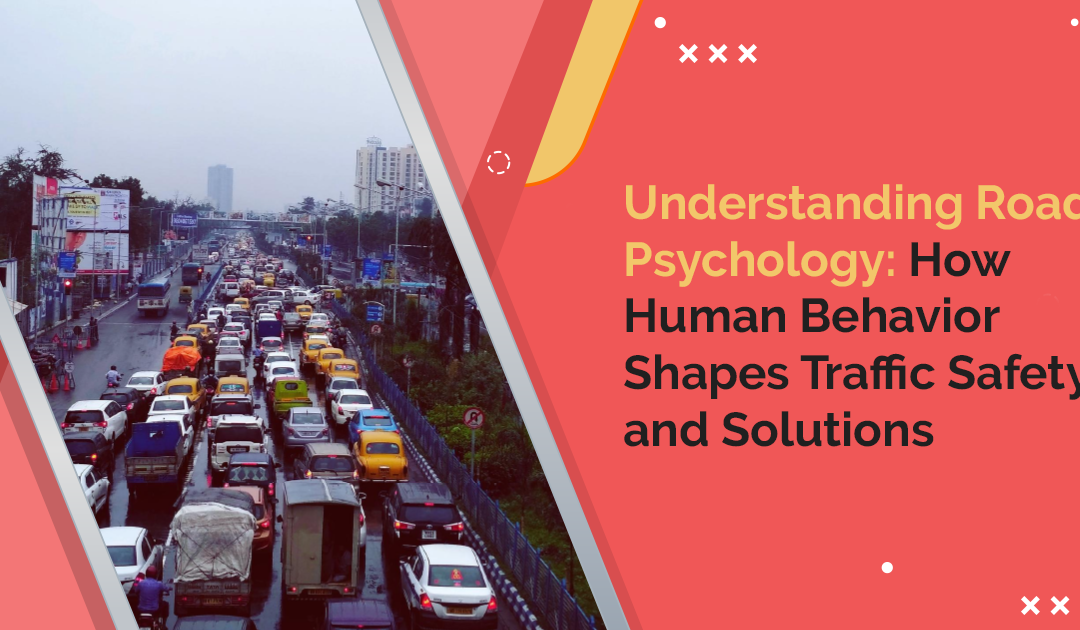Understanding Road Psychology: How Human Behavior Shapes Traffic Safety and Solutions

Roads are more than just pathways for vehicles; they are dynamic spaces where human behavior plays a critical role in determining safety. Road psychology, a growing field of study, delves into how psychological factors influence driver decisions, pedestrian actions, and overall traffic dynamics. By understanding road psychology, we can better address the root causes of accidents and implement strategies that promote safer road environments.
Road psychology examines the mental processes and behaviors of road users, including drivers, cyclists, pedestrians, and passengers. It focuses on how cognitive, emotional, and social factors influence decision-making, reactions to traffic situations, risk perception, and compliance with rules. This field bridges the gap between human psychology and traffic management, emphasizing that understanding human behavior is as crucial as engineering safer roads.
Key Psychological Factors Influencing Road Behavior
Risk perception plays a significant role in road behavior. Many drivers underestimate risks, leading to behaviors like speeding, tailgating, or ignoring signals. Overconfidence, especially in experienced drivers, can result in a false sense of control, increasing accident risks. Stress and aggression are other critical factors. Road rage, impatience, and frustration often stem from traffic congestion or personal issues, leading to aggressive driving behaviors such as excessive honking or cutting off other vehicles.
Distractions, both cognitive and emotional, are major contributors to accidents. Using mobile phones, adjusting the radio, or even experiencing anger or anxiety can impair focus and decision-making. Social influences also shape behavior; peer pressure and cultural norms can encourage risky practices, such as not wearing seat belts or helmets. Additionally, observing others breaking traffic rules often normalizes such behavior, creating a cycle of non-compliance.
Cognitive load affects decision-making, particularly in complex traffic situations or adverse conditions like poor signage or bad weather. Drivers may become overwhelmed, leading to errors. Age and experience further influence behavior. Young, inexperienced drivers are more prone to risky actions due to impulsiveness, while elderly drivers may struggle with slower reaction times and declining vision.
The Impact of Road Psychology on Traffic Safety
Road psychology is deeply intertwined with traffic safety. Studies show that over 90% of road accidents are caused by human error. Psychological factors like distraction, misjudgment, and resistance to authority often underlie these errors. For instance, biases such as the “illusion of invincibility” lead many to ignore traffic laws, increasing the likelihood of accidents.
Pedestrian behavior also plays a role. Pedestrians often misjudge vehicle speed or overestimate drivers’ ability to stop in time. Risk-taking behaviors like jaywalking are frequently driven by urgency or peer pressure, further compounding safety challenges.
Solutions Rooted in Road Psychology
Understanding road psychology enables the development of targeted interventions to modify behavior and enhance safety.
Behavioral awareness campaigns have proven effective in addressing specific psychological triggers. Campaigns like “Don’t Drink and Drive” and “It Can Wait” educate road users about the consequences of risky actions, fostering awareness and encouraging responsible behavior. Reward programs, such as insurance discounts for accident-free driving, use positive reinforcement to build a culture of compliance and accountability.
Road design and engineering also play a crucial role in influencing behavior. Features like speed bumps help reduce speeding, while well-designed signage and roundabouts minimize cognitive load and ease decision-making under complex traffic conditions. These infrastructural interventions align with psychological principles to guide safer behaviors naturally.
Technology integration offers another avenue for improving road safety. Advanced driver-assistance systems (ADAS) provide real-time alerts and, in critical situations, can take over to prevent accidents. Mobile apps that monitor and reward safe driving practices further incentivize positive habits, combining technology and psychology for impactful results.
Traffic law enforcement remains a vital component of behavioral modification. Visible enforcement mechanisms, such as speed cameras and traffic patrols, serve as effective deterrents for violations. Progressive penalties, including escalating fines, discourage repeat offenses, reinforcing the importance of adhering to traffic rules.
Mindfulness and stress management training can significantly reduce driver stress and aggression. Encouraging drivers to adopt mindfulness techniques can enhance focus and emotional control. For professional drivers, corporate wellness programs incorporating resilience training can further improve their ability to handle stressful traffic situations with patience and caution.
The Role of Individual Responsibility
While systemic interventions are essential, individual accountability cannot be overlooked. Road users must stay focused, avoid distractions, and practice patience and empathy towards others. Recognizing personal limitations and committing to responsible driving can set a positive example, fostering a culture of safety.
Conclusion
Road psychology highlights the pivotal role human behavior plays in traffic safety. By understanding the psychological factors that influence actions on the road, we can design better interventions, enforce smarter policies, and foster responsibility among road users. Creating safer roads requires a collective effort where infrastructure, technology, and behavioral change work hand in hand.
Let us take the first step by recognizing our habits and committing to safer practices. Together, we can pave the way for roads that are not only efficient but also secure for all.